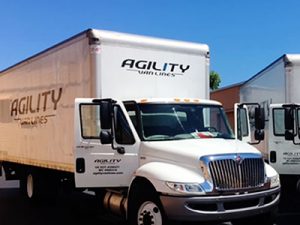Long-Distance Moving Vs. Local Moving: What’s the Difference?

You’re on the cusp of a new life adventure—moving to a new home. Yet, the term ‘moving’ holds varied implications depending on the distance involved. If you’re weighing your options between a local and a long-distance move, knowing what to expect from each could spell the difference between a smooth transition and a nightmare. In this comprehensive guide, we’re diving into the nuts and bolts of these two types of moves to help you make an informed decision. We’re not just scratching the surface; we’re getting into the nitty-gritty details that truly differentiate the two.
Local Moves: More Than Just a Hop, Skip, and a Jump Away
What Defines a Local Move?
A local move typically encompasses a relocation within the same city or a short distance from your current home, often around 50 miles or less. While it’s tempting to dismiss this as merely a logistical hiccup, local moves require thoughtful planning, too. Incorrect assumptions about its simplicity could lead to overlooked details, causing unnecessary stress or cost.
Practical Aspects of Local Moves
When planning a local move, the proximity allows for greater flexibility. For example, you might not need to arrange for temporary housing. If you’re moving within the same city, you’ll find it easier to scout the new location beforehand, ensuring that your new home fits your lifestyle needs. Your familiarity with the local area means that utilities setup and even social adjustments might take less time compared to long-distance moves.
Risks and Challenges
While a local move may offer the comfort of proximity, it has its unique set of challenges. Often, people underestimate the amount of work required and opt to forego professional help, only to find themselves in a bind later. Also, because these moves are usually charged by the hour, delays caused by poor planning can quickly add up, straining your budget.
Financial Considerations
Local moves often appear cost-effective at first glance. You’re billed hourly for the moving truck and labor, which seems straightforward enough. But beware—additional costs like packaging materials, specialty moving equipment for large furniture, or even extra charges for stairs and elevators can inflate your budget considerably.
Long-Distance Moves: A Whole New Ball Game
What Constitutes a Long-Distance Move?
Anything over a 100-mile radius from your current location usually falls into the long-distance category. More often than not, these moves also cross state lines. The real kicker here isn’t just the distance but the intricate logistics that come with it—think permits, state regulations, and extensive planning timelines.
Preparatory Steps
Long-distance moves are not something you can wing. The process starts with finding a reliable moving company that specializes in long-haul relocations. Next comes a detailed inventory of your belongings to determine the cost, which is generally based on weight. Furthermore, you’ll need to figure out things like temporary accommodations, storage options for things you won’t immediately move, and the timing for utility setups at your new location. Here’s more tips on your first long distance moving.
Financial Implications
Unlike local moves, where you pay by the hour, long-distance moves involve complex pricing structures based on the weight of your items and the total distance covered. That’s not counting the potential costs for additional services like packaging, disassembly, and reassembly of furniture, or temporary storage.
Common Pitfalls
The complexity of a long-distance move means more opportunities for things to go wrong. Issues like damaging valuable items due to inadequate packing, legal troubles due to a lack of understanding of interstate moving regulations, or even scams by unscrupulous moving companies are genuine concerns.
Local vs. Long-Distance: The Comparative Anatomy
When it comes to the decision-making process, several key factors come into play.
Time
Local moves usually require less preparation time, sometimes as little as a few days. Long-distance relocations, on the other hand, are a different beast altogether. You’ll need to allot weeks or even months for planning to ensure everything goes smoothly.
Complexity
While local moves can be more forgiving of last-minute changes, long-distance moves require meticulous planning. You’ll need to think about your new life in its entirety, right down to changing doctors, schools, or even understanding new state laws.
Emotional Considerations
It’s essential to consider the emotional toll as well. Local moves often mean you can maintain your current social circle, but a long-distance move might necessitate starting anew, making it emotionally taxing.
In Conclusion: Your Next Steps
Choosing between a local and long-distance move is not merely a question of distance but involves a multi-faceted consideration of factors like time, money, complexity, and even emotional readiness. Whether you’re going a few blocks down or crossing state lines, making an informed decision can make your move more manageable and less stressful. So, before you start filling up those boxes, take a moment to reflect on the unique requirements and challenges of each move type. Doing so will pave the way for a transition that aligns best with your life’s next chapter.
Back ↵




